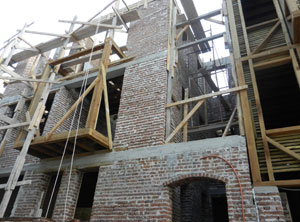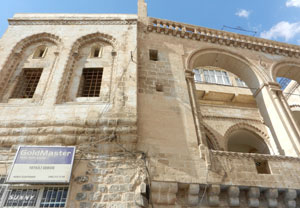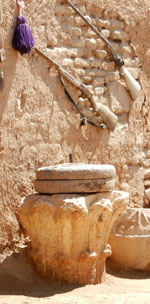Frijol Con Puerco
 All over Merida (indeed, in most of Mexico), on almost every block, one can find a little “cocina economica”. These tiny restaurants with only two or three tables offer excellent home-cooked food at remarkably low prices. You can buy a filling home-cooked lunch for the equivalent of around two or three dollars! Everyone living here has their favorite place. Each “cocina” has a choice of several dishes a day, and on Mondays the tradition at every single one is “frijol con puerco”, a delicious local version of pork and beans.
All over Merida (indeed, in most of Mexico), on almost every block, one can find a little “cocina economica”. These tiny restaurants with only two or three tables offer excellent home-cooked food at remarkably low prices. You can buy a filling home-cooked lunch for the equivalent of around two or three dollars! Everyone living here has their favorite place. Each “cocina” has a choice of several dishes a day, and on Mondays the tradition at every single one is “frijol con puerco”, a delicious local version of pork and beans.
Here is one version of the local recipe for you cooks out there who like to experiment – you won’t be disappointed! (for 4 or 5 people)
Ingredients:
1/2 lb of black beans
1/2 lb of pork loin or leg, cut into small cubes
1/2 lb of pork ribs
Bacon fat
1 fresh chile “guerro” (long pale and not very hot chile)
2 while or yellow onions
1 sprig of epazote
1/2 C chopped cilantro
2 large ripe tomatoes
1/2 C chopped radish
1 lime
Salt and pepper to taste
Preparation:
The evening before, wash and clean the beans then leave to soak, covered with water.
1. Cook the beans with 1 tsp salt IN THE SAME SOAKING WATER, covered, over medium heat until they begin to soften.
2. Add the pork and and continue to cook until everything is tender (Some people prefer to fry the meat before adding to the
beans – up to you!)
3. Fry onion until soft and slightly browned and add to the beans with epazote and the whole chile. Cook slowly a further 30
min. then remove from the heat.
4. At the same time, cook sufficient white rice for your dinner party – around 1 cup cooked per person.
For the “salsa”, finely chop the second onion, cilantro and radish. Put together in a mixing bowl, add salt, juice of the lemon or lime and mix together (blend if you prefer it more liquid than chunky).
How to serve:
Serve in soup plates with a cup of rice and garnished with chopped radish, cilantro and chopped onion to taste, and some salsa. Enjoy, and wish you were in Yucatan!
Posted: September 7th, 2012 under Yucatan Culture.
Comments: 53

 The latest arrivals, who are moving in next week, are Bruce Talbot and Sandra Gregory. This dynamic international couple met while working in London for the BBC. Sandra (English) was a producer of documentaries and Bruce, originally from New Zealand and an accomplished sax/clarinet player, was working on jazz recordings. From the BBC they moved on to Washington D.C., where Bruce helped the Smithsonian compile jazz recordings and Sandra was an executive producer with the Discovery Channel.
The latest arrivals, who are moving in next week, are Bruce Talbot and Sandra Gregory. This dynamic international couple met while working in London for the BBC. Sandra (English) was a producer of documentaries and Bruce, originally from New Zealand and an accomplished sax/clarinet player, was working on jazz recordings. From the BBC they moved on to Washington D.C., where Bruce helped the Smithsonian compile jazz recordings and Sandra was an executive producer with the Discovery Channel. 
















